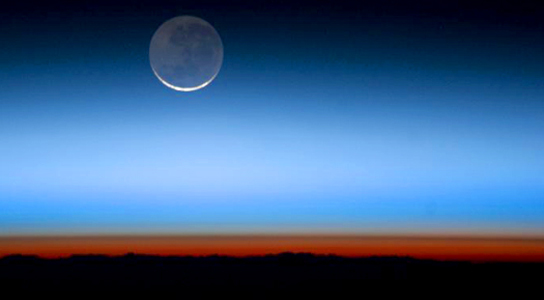
Rocks preserved in the Earth’s crust reveal a sharp decrease in mantle melting intensity, leading to the ideal conditions for the Great Oxygenation Event around 2.5 billion years ago. Credit: Princeton University
Researchers have discovered that the proliferation of oxygen in the Earth’s atmosphere was linked to a sudden change in its mantle, billions of years ago, during the Paleoproterozoic era.
Scientists from Princeton University published their findings in the journal Nature and revealed that rocks preserved in the Earth’s crust showed a steep decline in the intensity of melting within the mantle, which brought about the ideal conditions for the Great Oxygenation Event, a period that occurred approximately 2.5 billion years ago.
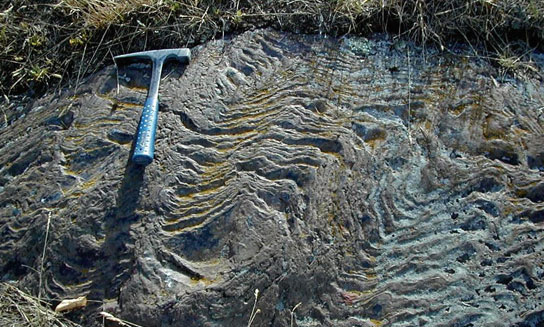
Negaunee Iron-Formation, mid-Paleoproterozoic. Credit: Princeton University
In the GOE, which may have lasted up to 900 million years, oxygen levels rose and created an atmosphere that was more suitable to life as we know it.
Blair Schoene and C. Brenhin Keller, geological scientists at Princeton, compiled a database of more than 70,000 geological samples to construct a 4-billion-year geochemical timeline. The analysis uncovered a sharp drop in mantle melting 2.5 billion years ago, which coincides with the rock evidence of atmospheric changes related to the GOE.
The researchers suggest that the diminished melting in the mantle decreased the depth of melting in the Earth’s crust, which reduced the output of reactive, iron oxide-based volcanic gases into the atmosphere. At lower concentrations, these gases allowed free oxygen molecules to proliferate. The usual higher concentrations react and remove oxygen from the atmosphere.
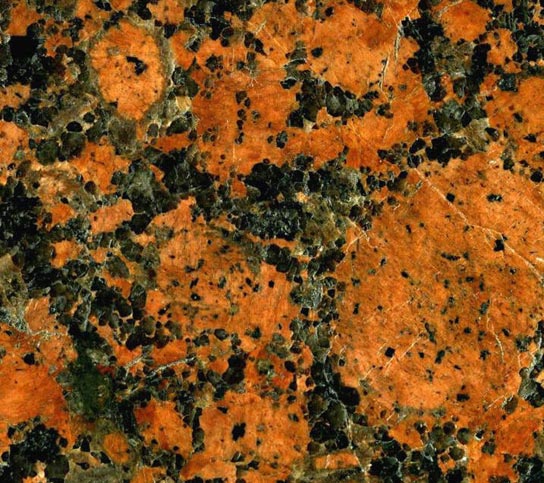
Baltic red granite. Credit: Princeton University
The research is based upon a statistical analysis of the geological record. The change in subsurface activity around the time of the GOE was noted before, but the evidence of this shift is geochemically subtle, especially after billions of years. Previous research in this area was largely qualitative.
The dominant theory of oxygenation, the abundance of photosynthetic life emerging some hundreds of millions of years before the GOE, is somewhat problematic since there would have not been enough oxygen to overcome the sinks which were absorbing more oxygen from the atmosphere than was being put into it.
The hypothesis of the primary sinks, volcanic gases, which were suddenly neutralized might explain this. The methodology used precludes anecdotal geological evidence and focused more on statistics which allowed the researchers to map the geological trends during billions of years.
The Earth’s mantle underwent a gradual cooling. About 2.5 billion years ago, the magnitude of melting deep in the mantle dropped off suddenly. Keller and Schoene confirmed their findings by analyzing crust-level felsic rocks, like granite, which form when hot basalt merges with other minerals.
When melting happens at great depth in the crust, the concentration of iron-oxide gases in magma increases. Once they are emitted into the air by volcanoes, these gases will bond with free oxygen, removing it from the air. When the crust melting becomes shallower, the atmospheric levels of these gases drop and more free oxygen remains in the air.
The interplay of such systems could be applied to mass extinction pulses, but those are a result of multiple factors, both above and below the Earth’s surface, which are decidedly more complex.
Reference: “Statistical geochemistry reveals disruption in secular lithospheric evolution about 2.5 Gyr ago” by C. Brenhin Keller and Blair Schoene, 23 May 2012, Nature.
DOI: 10.1038/nature11024

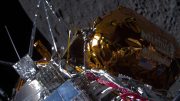
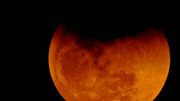





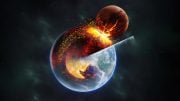
Be the first to comment on "Geological Record Shows Earth’s Oxygen Came from Mantle Cooling"